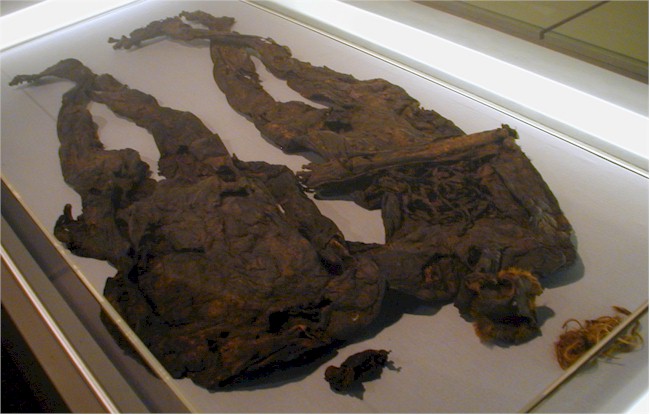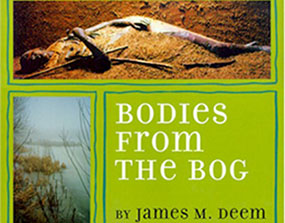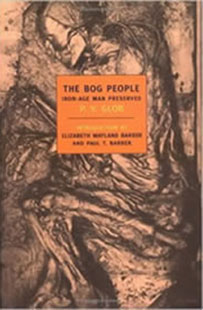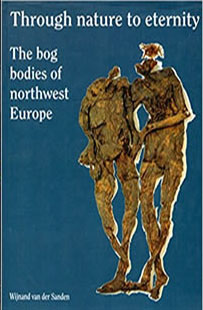Paperback edition, 2003.
|
~~ Suggestions for Visiting Bogs and Bog Bodies ~~ ~~ Bog Body Stories ~~ Related Books by James M Deem: Bodies from the Ice ~~ Bodies from the Ash ~~ ~~ |
Emmer-Erfscheidenveen Man
Discovered in 1938 in the Netherlands' Bourtangermoor, the Emmer-Erfscheidenveen is an unusual bog body, according to Dutch archaeologist W.A.B. van der Sanden. A Bronze Age body that dates to 1200 B.C., Emmet-Erscheidenveen Man is clothed--which makes him a rarity. Most Bronze Age bog bodies are rarely associated with clothing (for a variety of reasons). In fact, as van der Sanden writes, "the body was accompanied by so many garments that we can dress the man completely": woolen underwear, sheepskin cap, calfskin cape, deerskin shoes.
The body itself was not found in good condition, and the only reason why he is referred to as a man is because of the type of clothing found with "him." Only two bones were recovered: the tongue bone (partial) and a small bone from his foot or hand. Van der Sanden speculates that if the tongue bone was broken at the time of his death, Emmer-Erfscheidenveen Man may have been strangled, though there is no other evidence to suggest this.
Also worth noting is that is that Emmer-Erfscheidenveen Man is most likely the oldest bog mummy ever discovered, though he is more of a skeleton than a preserved body.

The clothing of Emmer-Erfscheidenveen Man
The Weerdinge Men
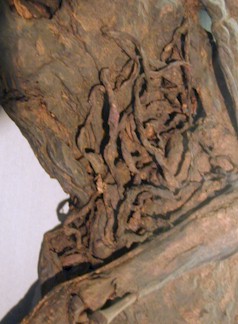 Double bog body finds are quite rare, so the Weerdinge Men are special--in even more ways than that.
Double bog body finds are quite rare, so the Weerdinge Men are special--in even more ways than that.
Found in the Bourtangermoor in 1904 by peatcutter Hilbrand Gringhuis, the bodies were long thought to be those of a man and woman. They were called the Weerdinge couple, and they were even given names: Darby (for the man) and Joan.
But when scientists examined the poorly-preserved bodies (important identifying features are missing from both--including heads and genitalia) almost 100 years later, they soon discovered that "Darby and Joan" were actually both men.
What scientists found particularly interesting about the man on the right (arm crossed over the abdomen) is the material on his chest: his intestines have emerged from a stab wound to his chest. They theorize that he may have been a prisoner of war and that he was sacrificed so that his entrails could be read to divine the future. It's hard to understand what type of future could be read by using this technique, but it was part of the culture of some early peoples of Europe, according to Roman historians.
Scientists have wondered about their relationship. Were they soldiers? Were they brothers or father and son? You might think that DNA analysis would reveal all. But the chemicals found in the bog destroy all traces of DNA in bog bodies and make it impossible to determine any genetic relationship between the two men.
